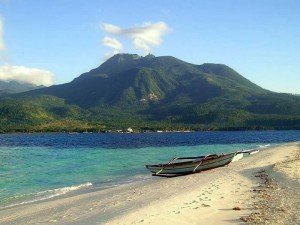PHL Earns 8th ASEAN Heritage Park; Mt. Timpoong-Hibok-Hibok Natural Monument
The Philippines has gained its eighth ASEAN Heritage Park (AHP) after environmental ministers from the 10-member Association of Southeast Asian Nations unanimously approved the nomination of Mt. Timpoong-Hibok-Hibok Natural Monument (MTHHNM) during their recent meeting in Hanoi, Vietnam.
“As MTHHNM steps into the pantheon of Southeast Asia’s natural treasures, we wish to generate greater appreciation for the environmental uniqueness of this natural park in the island province of Camiguin,” said Environment Secretary Ramon J.P. Paje.
The inclusion of MTHHNM in the list of AHPs was made during the 13th ASEAN Ministerial Meeting on the Environment, which was attended by environmental ministers and their representatives.
AHPs are protected areas recognized for its uniqueness, diversity and outstanding values. With the naming of MTHHNM as AHP, it is now part of a regional network of national protected areas enjoying a high conservation importance for their rich ecosystems.
“We hope that with the declaration, Camigueños and the rest of the Filipinos as well as the province’s visitors will appreciate its value and resources and take extra steps to conserve it for the enjoyment of future generations,” Paje said.
He added: “Camiguin may be such a small island, but it is highly significant to our biodiversity conservation efforts. MTHHNM, in particular, has so much potential in educating the public about endemic species while being a prime ecotourism destination.”

Mt. Hibok-Hibok
MTHHNM has a total area of 3,739.14 hectares and was declared in 2004 as a protected area under the National Integrated Protected Areas System (NIPAS), by virtue of Presidential Proclamation No. 570.
The park enjoys a high endemism of flora and fauna. It is home to birds such as the Camiguin Hawk Owl, Camiguin Hanging Parrot, Yellowish Bulbul, and Golden yellow white-eye; mammals like the Camiguin forest rat and forest mouse; and amphibians such as the Camiguin narrow-mouthed frog.
Endemic flora include medicinal trees like Kalingag (Cinnamomum mercadoi) and Duguan (Myristica philippensis).
MTHHNM is also a prime ecotourism area as it boasts of distinct rock formations, mountain lakes, waterfalls, cold and hot springs, and soda waters.
It also serves as the island’s watershed, the main source of potable water for residents and irrigation for lowland areas.
The other ASEAN Heritage Parks in the Philippines are Mt. Apo Natural Park, Mt. Kitanglad Range Natural Park, Mt. Malindang Range Natural Park, and Mt. Hamiguitan Wildlife Sanctuary, all in Mindanao; Mts. Iglit-Baco National Park in Occidental Mindoro; Mount Makiling Forest Reserve in Laguna; and Tubbataha Reefs Natural Park in Palawan.
Camiguin is known as “the island of seven volcanoes,” with Mt. Timpoong as its highest peak and the active Mt. Hibok-Hibok as the largest volcano.(PNA) JBP/PR/pjn


